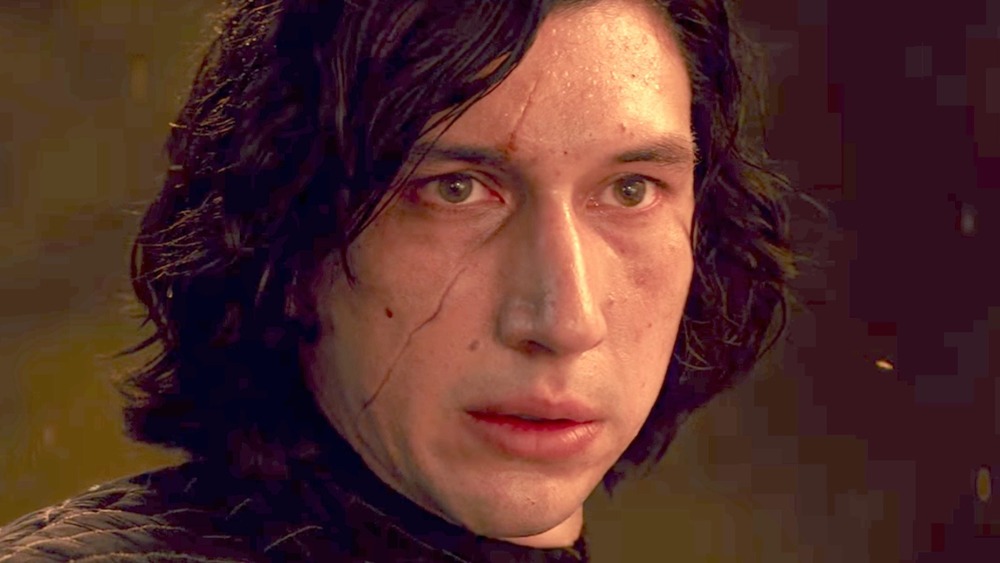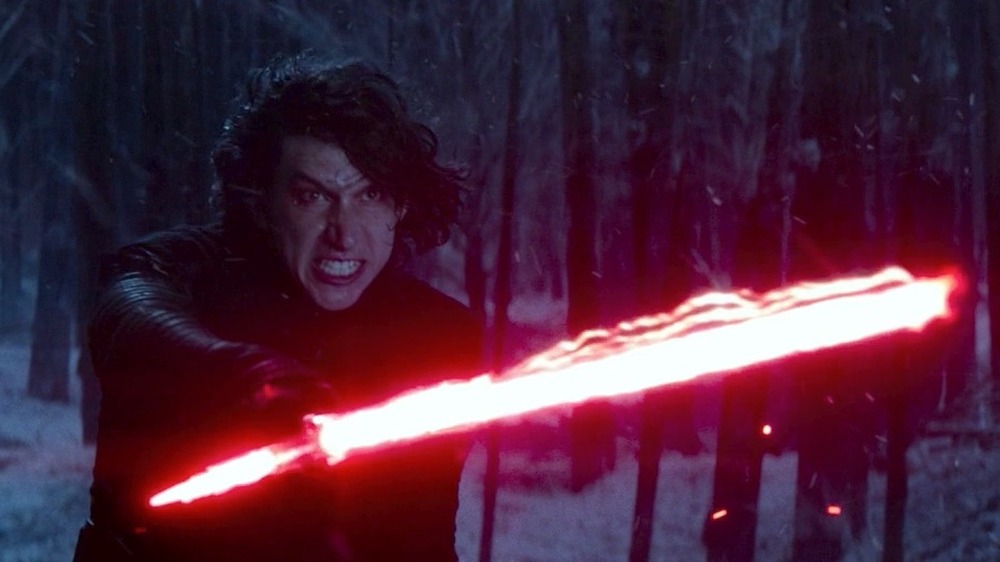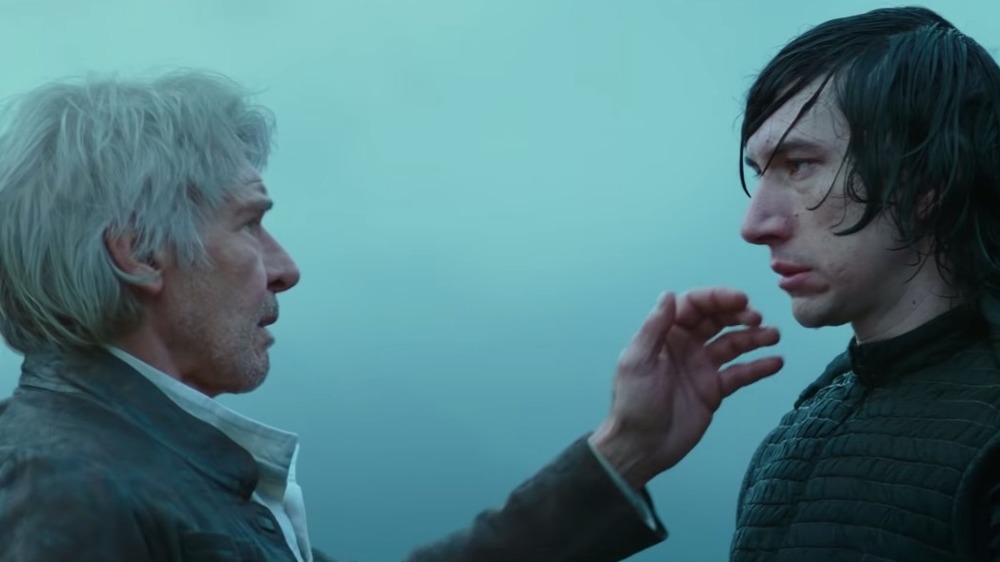Why Kylo Ren's Lightsaber In Star Wars Means More Than You Think
Introduced in 2015's Star Wars: Episode VII – The Force Awakens, Adam Driver's Kylo Ren is a lot different from the previous villainous force wielders we've met in the franchise. While he idolizes Darth Vader, Kylo is more volatile and unpredictable than his ancestor, with little or no control over the violent outbursts his late grandfather was able to keep in check. At the same time, he displays powerful abilities we never see his predecessors share in the films, such as being able to freeze laser blasts mid-air and to extract information from victims with nothing but the force.
Visually speaking, perhaps the thing that most differentiates Kylo from other Star Wars villains is his lightsaber. Unlike other examples of the weapon we've seen, Kylo's blade includes an energy crossguard at the top of the hilt, giving it a shape somewhat more like an actual sword than most lightsabers.
So what's going on with that lightsaber? Was it just a gimmick to help usher in the sequel trilogy, or is there something more to it? Could it be that the weapon is meant to reflect something about its wielder?
Kylo Ren's lightsaber has an interesting flaw
Each new era of Star Wars seems to bring with it a new kind of lightsaber. The Phantom Menace introduced us to Darth Maul's popular double-bladed weapon with which he kills Qui-Gon Jinn, and the sequel trilogy brings us Kylo Ren's crossguard lightsaber. But before you think Kylo's blade is nothing more than the latest Star Wars schtick, you may want to take a look at Star Wars The Rise of Skywalker: The Visual Dictionary, a book that includes some revealing information about the lightsaber.
You may have noticed that, along with its trademark crossguard, Ren's saber's energy blade doesn't seem quite as solid as others. If you pay attention you'll notice stray waves of energy and red sparks emanating from it. This is because apparently Kylo isn't quite as good at finding kyber crystals as he is at locating black clothing.
The kyber crystal within Kylo's blade is cracked, causing more heat than normal to issue from the rock. The crossguard isn't just meant to look cool — the lateral vents that form the crossguard are necessary to siphon off the extra heat. In the right situation, the crossguard can also give him a tactical advantage — during his fight with Finn in The Force Awakens, for example, when their blades are locked Kylo uses the crossguard to wound his opponent's shoulder.
Still, while the blade clearly has a practical purpose, there's another, more important connection between the weapon and its wielder.
Kylo Ren's lightsaber represents his inner conflict
More than the practical reasons for its distinct look, Kylo Ren's blade is a mirror of its wielder. The thing that most separates Kylo from Star Wars villains like Vader, Snoke, Dooku, and so on, is that — like the kyber crystal powering his blade — Kylo is cracked in two. As much as he claims otherwise to his father, to Snoke, and to Rey, the war inside him between darkness and light doesn't conclude until his tragic end in The Rise of Skywalker. He murders his own father to try to end that struggle, but as we see when Han appears before him in the trilogy's final film, it doesn't work.
Like the blade, Kylo is unstable because of his inner struggle. This is why when Finn and Rey escape Jakku with BB-8 and the map to Luke Skywalker, Kylo begins hacking away at the nearest electronics. It's also why, toward the end of The Last Jedi, he demands the First Order troops keep firing at what eventually proves to be the illusion of Skywalker, long after the gunfire goes way past excessive into just plain crazy.
It's also probably why Kylo Ren is capable of such impressive feats as ripping thoughts from victim's minds and stopping laser beams mid-air. Just as the crystal within his lightsaber creates extra heat, the severing of Kylo's spirit grants him incredible power that's sadly at the command of a fractured mind.


